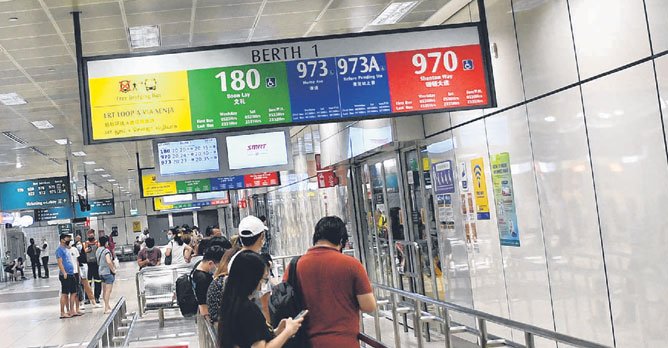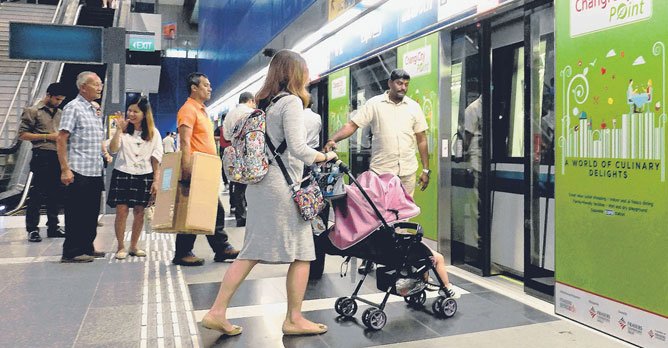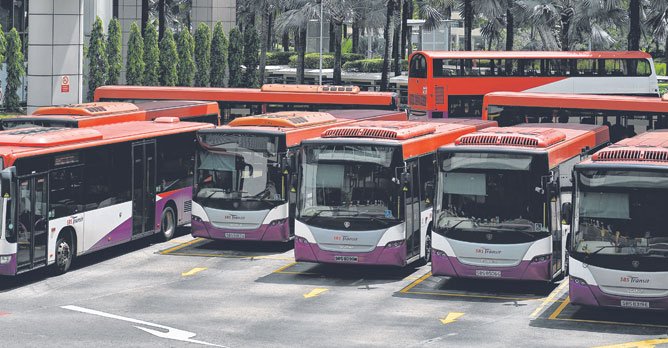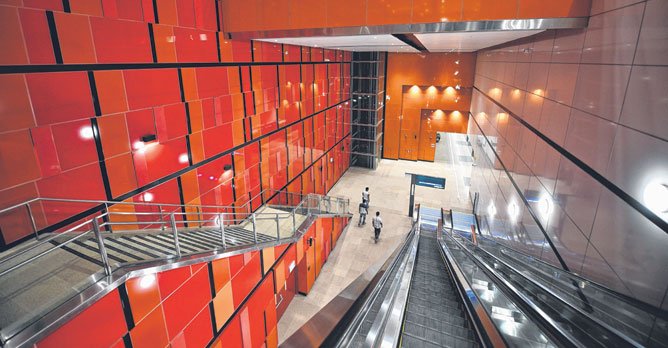Bukit Panjang stretch of DTL costs $60m in subsidies a year
09 Aug 2020|292 views
About $60 million a year in public funds goes towards subsidising operations for a stretch of the MRT Downtown Line (DTL) connecting Bukit Panjang to the city, Transport Minister Ong Ye Kung said on 7 August 2020.
He revealed this figure in response to a Bukit Panjang resident who had submitted a petition with more than 2,000 names asking the Land Transport Authority (LTA) to rescind its plans to remove some bus services from the area and change the routes of others.

"It is not a profitable line, so the Government uses public funds to subsidise the running of the line, and operation subsidy comes up to over $60 million a year for the DTL stretch connecting Bukit Panjang to the city," he said. At the same time, ridership on bus services that run parallel to the DTL has fallen significantly, he said.
For service 171, which will see its route changed, ridership fell by over 30% from 2015 to 2019. For service 700, which will be removed, it was more than a 50% drop in the same period. He said services 171 and 700 are also being subsidised, costing taxpayers $14 million a year.
"If the bus services are the only public transport option available to residents, LTA is able to justify the public spending," he said. "But with the DTL available, LTA needs to exercise prudence in public spending, and is hence making the changes announced."

"LTA will engage the grassroots adviser, Mr. Liang Eng Hwa, and hear out residents for mitigating measures." He added: "We seek the understanding of residents as we work through these changes, and strike a balance between the needs of various groups of commuters and financial prudence."
The same $60 million subsidy figure for the DTL was cited by Senior Minister of State for Transport Chee Hong Tat in a Facebook post on Friday evening. Mr. Chee said he would be meeting MPs Liang Eng Hwa and Edward Chia on Saturday with LTA representatives to discuss the issue.
Mr. Liang previously said he is aware of the ridership drop, but called for a "compromise solution" which does not call for the removal of services.

Asked why taxpayers were subsidising the running of a line which a private company had undertaken to operate in a competitive tender, the LTA said the sum was necessary to make up for a shortfall in funds necessary for the eventual asset replacement of the line.
"Under the New Rail Financing Framework (NRFF), the operator pays the Government a licence charge for the use of operating assets, such as trains and signalling system. This goes towards their eventual replacement and renewal," an LTA spokesman said. "As the DTL is not a profitable line, the licence charge paid by SBST is insufficient to cover the annual depreciation, and hence the eventual replacement of the DTL operating assets. The difference between the annual depreciation and licence charge paid is the Government's subsidy for DTL operations. This comes up to about $60 million a year for the DTL stretch connecting Bukit Panjang to the city."
The DTL is the first line operated under the NRFF, where the Government owns all fixed and operating assets, and the operator focuses on maintenance and meeting service standards. Unlike the bus contracting system, the government does not assume revenue risk in the NRFF.

Commenting on the $60 million subsidy, Singapore University of Social Sciences Transport Economist Walter Theseira called for more transparency on rail funding. "We know that on a systemwide basis, operating costs are now subsidised for rail but there is little information put out about the basis for these calculations, where subsidies are going, to whom, et cetera," he said.
Dr. Theseira added that in the case of the DTL, "we should be open" about how the revenue shortfall came out.
"We can accept that it is necessary to rescue a commercial operator which made a mistake in bidding - especially if factors that caused the financial distress are beyond an operator's control - but we don't know how exactly it came about and to what extent it is beyond operator control," said the former nominated MP. "We are not having a discussion about the right questions in public transport contracting and financing."
About $60 million a year in public funds goes towards subsidising operations for a stretch of the MRT Downtown Line (DTL) connecting Bukit Panjang to the city, Transport Minister Ong Ye Kung said on 7 August 2020.
He revealed this figure in response to a Bukit Panjang resident who had submitted a petition with more than 2,000 names asking the Land Transport Authority (LTA) to rescind its plans to remove some bus services from the area and change the routes of others.

"It is not a profitable line, so the Government uses public funds to subsidise the running of the line, and operation subsidy comes up to over $60 million a year for the DTL stretch connecting Bukit Panjang to the city," he said. At the same time, ridership on bus services that run parallel to the DTL has fallen significantly, he said.
For service 171, which will see its route changed, ridership fell by over 30% from 2015 to 2019. For service 700, which will be removed, it was more than a 50% drop in the same period. He said services 171 and 700 are also being subsidised, costing taxpayers $14 million a year.
"If the bus services are the only public transport option available to residents, LTA is able to justify the public spending," he said. "But with the DTL available, LTA needs to exercise prudence in public spending, and is hence making the changes announced."

"LTA will engage the grassroots adviser, Mr. Liang Eng Hwa, and hear out residents for mitigating measures." He added: "We seek the understanding of residents as we work through these changes, and strike a balance between the needs of various groups of commuters and financial prudence."
The same $60 million subsidy figure for the DTL was cited by Senior Minister of State for Transport Chee Hong Tat in a Facebook post on Friday evening. Mr. Chee said he would be meeting MPs Liang Eng Hwa and Edward Chia on Saturday with LTA representatives to discuss the issue.
Mr. Liang previously said he is aware of the ridership drop, but called for a "compromise solution" which does not call for the removal of services.

Asked why taxpayers were subsidising the running of a line which a private company had undertaken to operate in a competitive tender, the LTA said the sum was necessary to make up for a shortfall in funds necessary for the eventual asset replacement of the line.
"Under the New Rail Financing Framework (NRFF), the operator pays the Government a licence charge for the use of operating assets, such as trains and signalling system. This goes towards their eventual replacement and renewal," an LTA spokesman said. "As the DTL is not a profitable line, the licence charge paid by SBST is insufficient to cover the annual depreciation, and hence the eventual replacement of the DTL operating assets. The difference between the annual depreciation and licence charge paid is the Government's subsidy for DTL operations. This comes up to about $60 million a year for the DTL stretch connecting Bukit Panjang to the city."
The DTL is the first line operated under the NRFF, where the Government owns all fixed and operating assets, and the operator focuses on maintenance and meeting service standards. Unlike the bus contracting system, the government does not assume revenue risk in the NRFF.

Commenting on the $60 million subsidy, Singapore University of Social Sciences Transport Economist Walter Theseira called for more transparency on rail funding. "We know that on a systemwide basis, operating costs are now subsidised for rail but there is little information put out about the basis for these calculations, where subsidies are going, to whom, et cetera," he said.
Dr. Theseira added that in the case of the DTL, "we should be open" about how the revenue shortfall came out.
"We can accept that it is necessary to rescue a commercial operator which made a mistake in bidding - especially if factors that caused the financial distress are beyond an operator's control - but we don't know how exactly it came about and to what extent it is beyond operator control," said the former nominated MP. "We are not having a discussion about the right questions in public transport contracting and financing."
Latest COE Prices
October 2025 | 1st BIDDING
NEXT TENDER: 23 Oct 2025
CAT A$128,105
CAT B$141,000
CAT C$74,301
CAT E$140,009
View Full Results Thank You For Your Subscription.





















